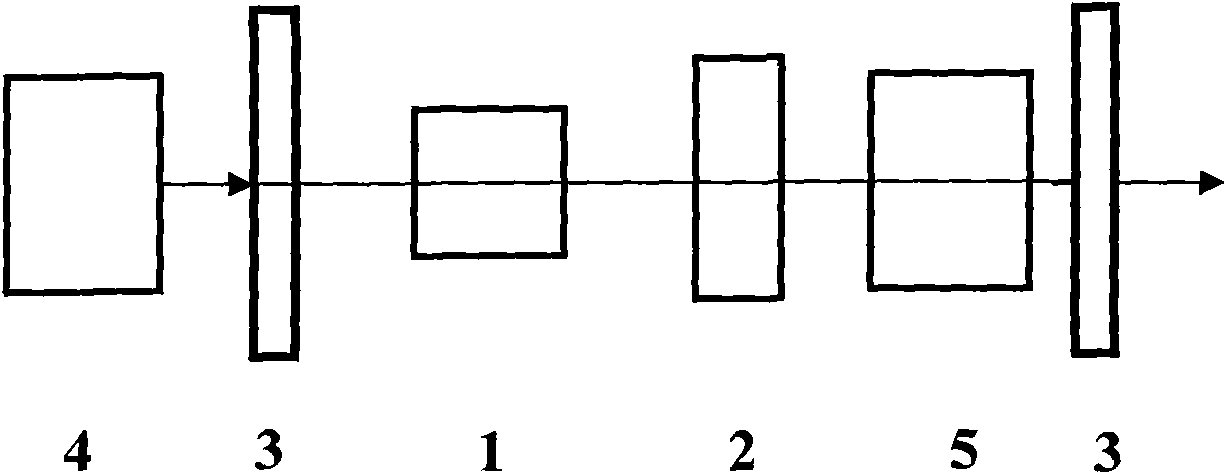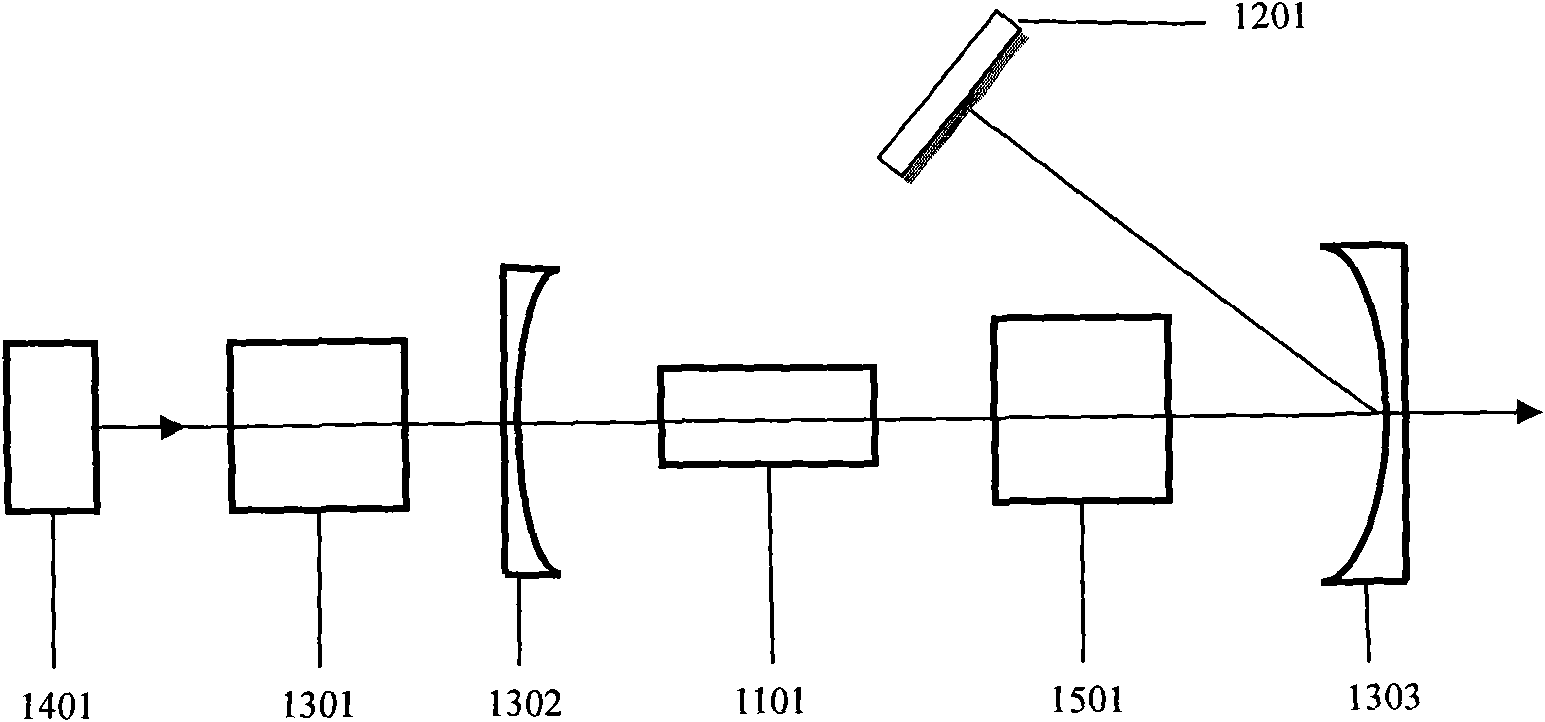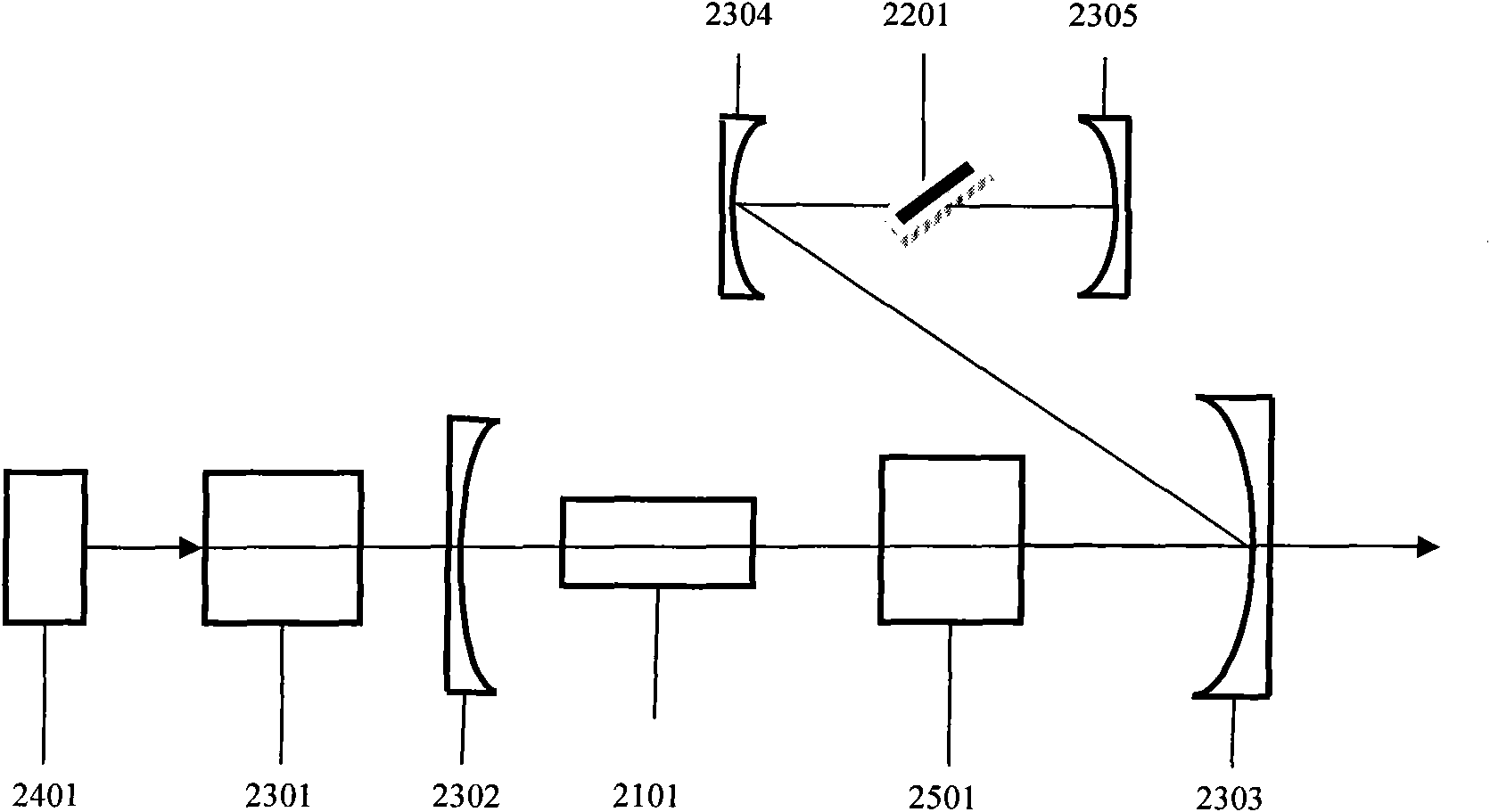Graphite Raman locked mode laser
A graphene and laser technology, applied in the direction of lasers, laser components, phonon exciters, etc., to achieve the effect of expanding the application range, high practical value, and wide application
- Summary
- Abstract
- Description
- Claims
- Application Information
AI Technical Summary
Problems solved by technology
Method used
Image
Examples
Embodiment 1
[0033] see figure 2 , figure 2 It is a structural schematic diagram of Embodiment 1 of the graphene Raman mode-locked laser of the present invention. It can be seen from the figure that the flexible wavelength mode-locked laser of the present invention includes a pump source 1401, an input coupling system 1301, a first reflector 1302, a second reflector 1303, a potassium gadolinium tungstate crystal 1101, a graphene mode-locked device 1201, Grating pair 1501. Potassium gadolinium tungstate crystal 1101 is used to provide Raman gain, graphene mode-locking device 1201 is made by placing graphene on a mirror to realize passive mode locking in the cavity, and grating pair 1501 is used to control the The dispersion is compensated to realize the compression of the mode-locked pulse, and the second mirror 1303 is used to output the intracavity oscillating light. By changing the central wavelength of the pump light, combined with the stimulated Raman scattering effect, the disper...
Embodiment 2
[0035] see image 3 , image 3It is a structural schematic diagram of Embodiment 2 of the present invention. It can be seen from the figure that the flexible wavelength mode-locked laser of the present invention includes a pump source 2401, an input coupling system 2301, a first mirror 2302, a potassium gadolinium tungstate crystal 2101, a graphene mode-locked device 2201, a grating pair 2501, a second Reflecting mirror 2303, third reflecting mirror 2304, and fourth reflecting mirror 2305. The pump light 2401 with different central wavelengths is input into the laser cavity through the input coupling system 2301. The potassium gadolinium tungstate crystal 2101 is used to provide Raman gain. The mode-locking device is used to achieve passive mode locking in the cavity, the grating pair 2501 is used to compensate the dispersion in the cavity to realize the compression of the mode-locked pulse, and the second mirror 2303 is used to output the oscillating light in the cavity. B...
Embodiment 3
[0037] see Figure 4 , Figure 4 It is a structural schematic diagram of Embodiment 3 of the present invention, Figure 5 , Figure 6 , Figure 7 and Figure 8 Respectively the specific form of the graphene mode-locked device in embodiment 3. Figure 5 It is a cross-sectional view of a section of single-mode optical fiber that is tapered, and then graphene is placed in the tapered area. In the figure, 5201 is the cladding of the single-mode optical fiber, 5202 is the graphene in the tapered area of the optical fiber, and 5203 is the core of the optical fiber; Figure 6 It is a cross-sectional view of engraving a U-shaped groove on one side of a single-mode fiber, and then placing graphene in the U-shaped groove area; 6201 in the figure is the cladding of the single-mode fiber, and 6202 is the graphene in the U-shaped groove area , 6203 is the fiber core; Figure 7 It is to absorb graphene on the end face of the fiber by optical precipitation for a section of single-mod...
PUM
 Login to View More
Login to View More Abstract
Description
Claims
Application Information
 Login to View More
Login to View More - R&D
- Intellectual Property
- Life Sciences
- Materials
- Tech Scout
- Unparalleled Data Quality
- Higher Quality Content
- 60% Fewer Hallucinations
Browse by: Latest US Patents, China's latest patents, Technical Efficacy Thesaurus, Application Domain, Technology Topic, Popular Technical Reports.
© 2025 PatSnap. All rights reserved.Legal|Privacy policy|Modern Slavery Act Transparency Statement|Sitemap|About US| Contact US: help@patsnap.com



